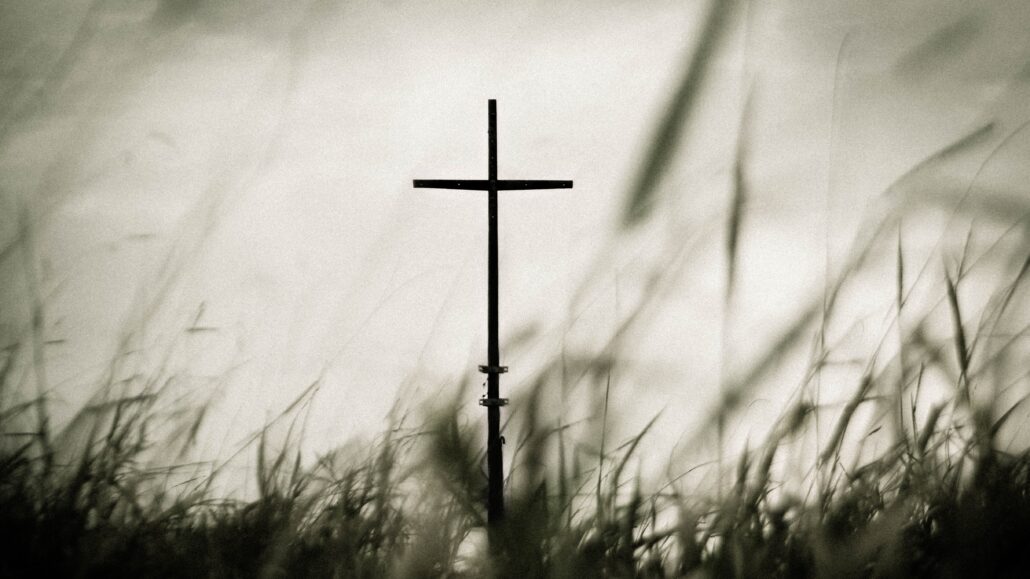For St. Francis of Assisi, it is the love of God, the self-offering and surrender of control that comes with the Incarnation that is at the heart of what it means to talk about the suffering of Jesus on the cross. This sense of giving up control is seen in the way scholar Zachary Hayes describes the place of the cross in the spiritual world-views of Francis and Bonaventure.
When we look at the mystery of Jesus, this evokes quite a different sense of the divine. When we think of the historical origins of Jesus, the poor circumstances of his life, the tragic historical ending on the cross, we must ask in what sense this is truly the incarnation of divine love.
For St. Francis and Bonaventure, such historical realities point our attention to the humble, tender elements of the world in order to discover there important signals of the presence of the divine. How can one look at the figure on the cross without asking: What is the nature of creative and redemptive love? What is truly creative power?
What it means to talk about love is laid out for us on the cross. And it is this sense of divine love—made concrete in the Incarnation and completed in the suffering on the cross—that was so transformative in the saint’s own life. We must not forget how the legend of his initial conversion to religious life begins before the cross in the form of the now-famous San Damiano crucifix. Vorreux describes that experience of the saint before the cross and how the young would-be saint would understand what was depicted before him:God
Waiting for him over the altar was a great Byzantine Jesus that the poor man of Assisi particularly liked because it represented a redeemer at once friendly and triumphant. This savior did not seem to say to the faithful, “Look how I suffered for you!” but “Look how much I love you!” It was “a Christ of peace and persuasion.”
It is not a God who is vindictive, vengeful, sadistic, or punishing that speaks to the heart of believers, but a God of love. It is a God who suffered on the cross precisely becauseof love, not despite it. And this love, thi passionfor humanity, touched the life of this Italian saints in a permanent, life-altering way.
After his death, Bonaventure will talk about the “transformative power of love.”17 Love is what moved the heart and mind of the saint from Assisi, and it is love that is the greatest force for change and good in our world. The cross, therefore, was not a sign of sin and death, but a sign of the tremendous power of love that speaks through the centuries, across all times and places, to the daily human experiences of true love.
Hayes recalls how in so many ways, often in the subtleness of the ordinary day-to-day, people are changed and shaped by the love of those and for those with whom there is a relationship. So too we are changed, if we are likewise open to the possibility, by the love experienced in relationship with the God who loves us so much that God desires to be with us as one like us. Hayes writes: “The life of grace and the imitation of Christ are a process of responding to the divine offer and the example of Jesus. And the human person is changed in that process. We become like what we love.”
A Saint Humbled by Jesus
In the case of Francis of Assisi, he indeed became like what he loved. If the cross was instrumental in his early conversion, then it was also formative in his daily life and represented in a unique way at the end of his earthly journey. Most people are familiar with his stigmata, the miraculous reception of the five wounds of Jesus, near the end of the saint’s life.
Theologians have suggested that one of the ways we can understand the marks of the crucifixion on the body of the saint is that he so conformed his life to that of Jesus, that he was so committed to embodying the Gospel, that he was so open to being transformed by the love of God, the saint became like what he loved: Jesus.
That this was made manifest in a physical way is rare, but the exemplary manner of his own way of living the Gospel, seen even to this day by the millions of women and men still inspired by his example, demonstrates the transformative ability of love in a very powerful way.
The saint’s early biographers make note that the gift of the stigmata was in fact rather painful. In other words, one of the effects of the transforming power of God’s love seen physically in the wounds on his body was suffering.
A particularly Franciscan view of the cross of Jesus and the Lord’s Passion first requires that love and suffering not be separated but, like the meaning of the word passion itself suggests, these two sides of the coin remain connected in our reflections.
Second, we must return to the Incarnation and the tremendous love that led to God’s becoming one like us to live as one among us. Any reflection on the cross should not be disconnected from the Incarnation, or to put it another way: Good Friday has as much to do with Christmas as it does with Easter. When we dwell on the suffering without remembering the love that provided the condition for the possibility of the cross, we end up distorting the meaning of our faith.
Finally, we must recognize the inherent transformative power of love. As with all relationships, both parties must be open to love and to be loved. With God in Jesus, the openness is always already there, the onus falls to us to respond to that love. In our response, our openness can lead to transformation and change the way we see the world, the way we treat one another, the way we care for the rest of creation, and the way we relate to our Creator.









1 thought on “St. Francis and the Cross of Christ”
Thank You for your insight and messaging about Jesus’ intent on the cross! I follow Father Richard Rohr and his website Center for Action and Contemplation. It gives me true hope!